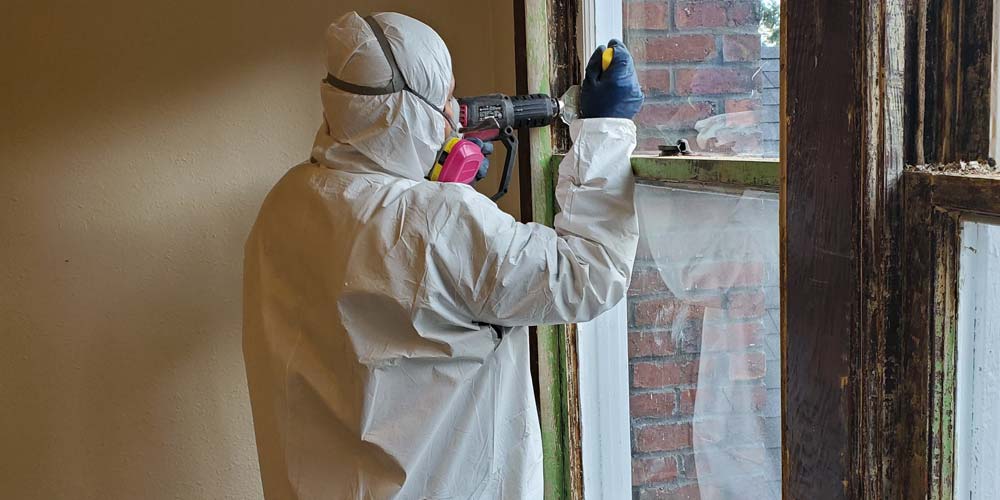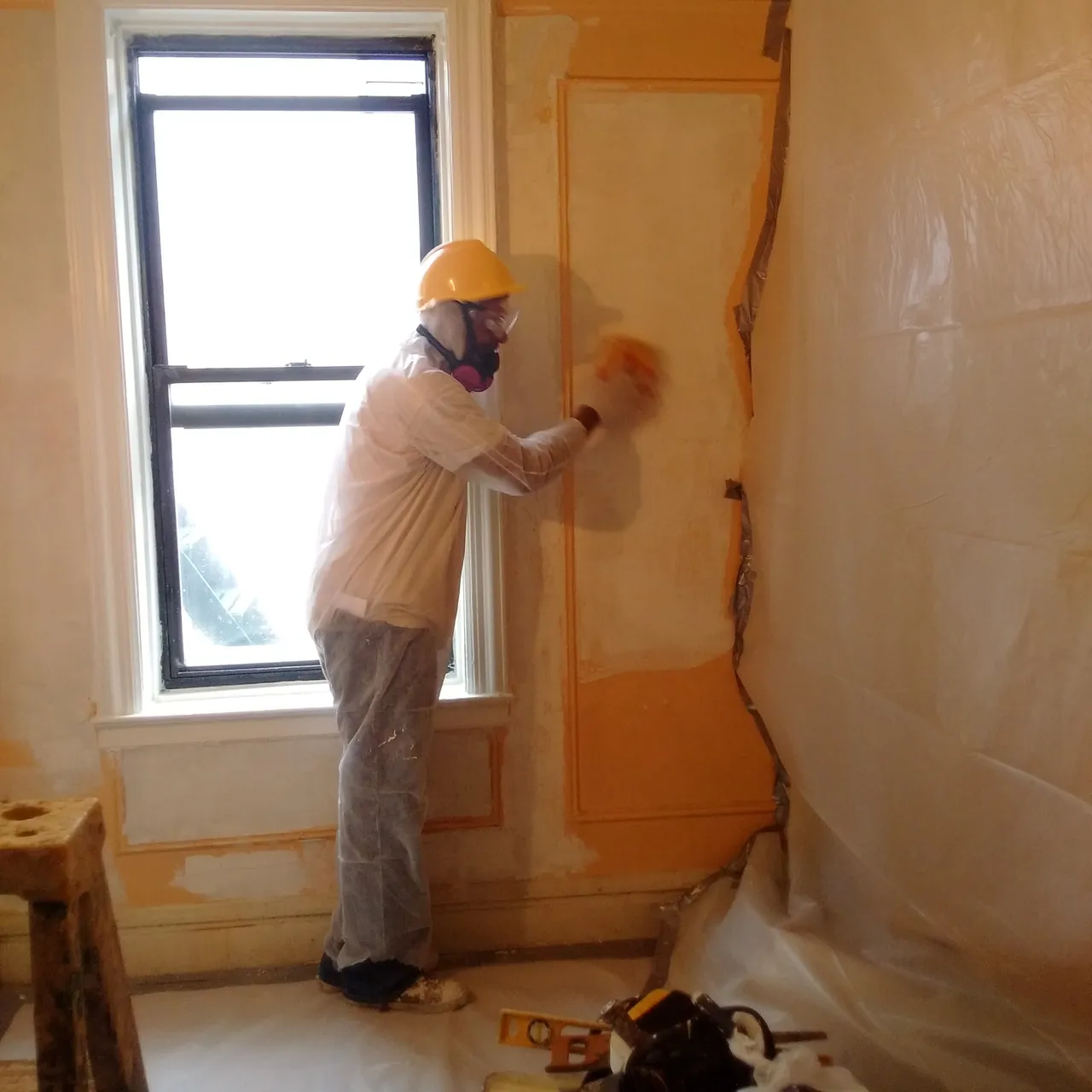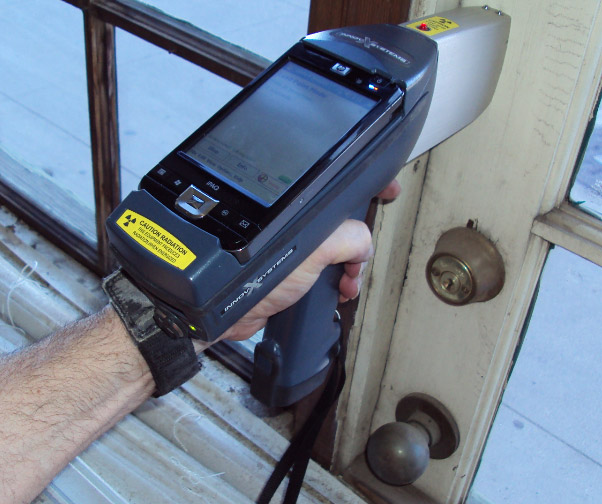Lead Paint Removal Service-- NYC's Trusted Solutions for Lead Safety And Security
Lead Paint Removal Service-- NYC's Trusted Solutions for Lead Safety And Security
Blog Article
Crucial Devices and Approaches for Reliable Lead Offense Cleaning
Resolving lead offenses properly requires a detailed method that blends the right tools with strategic methods. The initial step involves equipping workers with Personal Protective Tools (PPE) to secure their health and wellness. Concurrently, using specialized cleaning devices, such as HEPA vacuum cleaners and lead-specific cleansing agents, is crucial for complete pollutant removal. Efficient containment approaches, consisting of plastic sheeting and adverse atmospheric pressure systems, are necessary to protect against the spread of dangerous materials. In addition, risk-free disposal practices and rigorous adherence to regulative guidelines make certain accountable handling of hazardous waste. What are the nuanced techniques that truly make a difference?
Personal Safety Tools
Individual protective equipment (PPE) is an essential component in the effective monitoring of lead contamination cleanup. PPE acts as a crucial obstacle, guarding workers from the hazardous results of lead direct exposure, which can result in severe health consequences. The necessary PPE for lead cleaning consists of respirators, protective apparel, handwear covers, and eye defense. Each sort of equipment is specifically designed to mitigate different dangers connected with lead bits and dust.
Respirators, particularly those equipped with HEPA filters, are essential for filtering air-borne lead particles, preventing breathing. Correct fit and seal checks are vital to guarantee their effectiveness. Safety clothes, including coveralls and disposable matches, protects against lead dirt from adhering to employees' garments, lowering the danger of secondary contamination. Gloves, commonly constructed from nitrile or latex, protect the skin from direct call with lead, while safety and security goggles or full-face guards secure the eyes from dust and particles.
In addition, rigorous training on the proper use and maintenance of PPE is crucial. Workers must be informed on donning and doffing treatments to avoid contamination. Routine inspections and replacements of PPE elements are necessary to preserve their safety capabilities, making certain a safe and certified cleaning procedure.
Specialized Cleanup Equipment

An additional important device is the wet/dry vacuum cleaner, which can efficiently tidy up both dirt and liquid impurities. These vacuums commonly feature HEPA filters to offer an extra layer of safety and security. Wet wipes or tack towels are also crucial for surface area cleansing; they are specifically developed to record and hold lead fragments, minimizing the risk of spreading contamination.
For more stubborn down payments, specialized lead-removal cleansing representatives are called for. These representatives are developed to break down lead bits, making them less complicated to get rid of. Scrub brushes with sturdy bristles can aid in this process, specifically on harsh surfaces where lead dust has a tendency to adhere extra strongly.
Additionally, encapsulants are used to secure lead-contaminated surface areas, protecting against the launch of lead dust. These specialized paints and coatings are designed to adhere to different substrates, supplying a long-lasting option for lead control.
Efficient Containment Methods
Effective control techniques are important in reducing the spread of lead contamination throughout clean-up activities. Applying robust containment methods makes sure that lead particles do not move to unaffected locations, thus protecting both employees and the environment (DOH & HPD Lead Violation Removal NYC).

To boost containment, encapsulants can be put on surface areas that are not being removed or interrupted. These specialized finishings bind lead dust, reducing its accessibility for resuspension. Additionally, all employees should put on suitable Individual Protective Tools (PPE), consisting of respirators and non reusable fits, to prevent contamination spread.
Safe Disposal Practices
Making sure risk-free disposal practices is a crucial element in the administration of lead contamination clean-up. Proper disposal alleviates the threat of lead re-entering the atmosphere and jeopardizing public health (DOH & HPD Lead Violation Removal NYC).
Moving lead waste requires adherence to strict guidelines. Utilizing accredited contaminated materials service providers makes certain that the products are handled responsibly. Paperwork, including materializes outlining the type and amount of waste, need to come with deliveries to track the waste from the website of beginning to its last disposal location.
Designated unsafe waste disposal Go Here centers are outfitted to take care of lead-contaminated products securely. These centers commonly use innovative approaches such as stabilization, solidification, or chemical therapy to reduce the effects of the lead before disposal. Landfilling in specialized, lined areas that prevent leachate from contaminating groundwater is a common technique for last disposal.
Regular training for personnel involved in lead garbage disposal is critical to keep security standards and prevent accidental exposure. By adhering to these practices, companies can considerably minimize the environmental and health influences connected with lead contamination.
Regulatory Compliance Tips

Following governing compliance is paramount in the effective execution of lead contamination cleaning. Comprehending and complying with government, state, and regional regulations makes sure not only the safety and security and health of people however also the legal and financial wellness of the cleanup organization. The Epa (EPA) sets stringent criteria, such as the Lead Remodelling, Fixing, and Painting (RRP) Policy, which mandates proper accreditation and training for contractors managing lead-based activities.
Compliance begins with a thorough assessment of suitable regulations and regulations. Organizations needs to remain updated on any legislative changes, which can be assisted in with normal training sessions and subscribing to market updates. Documents is an additional vital compliance facet; preserving detailed records of all tasks, consisting of inspection reports, employee training logs, and disposal materializes, is necessary.
In addition, engaging with certified lead examiners or run the risk of assessors makes sure that lead dangers are appropriately recognized and alleviated. Employers should impose using Personal Protective Equipment (PPE) and ensure that safety methods are purely adhered to. Transparent communication with stakeholders, consisting of staff members, clients, and regulatory bodies, will certainly promote a culture of conformity and responsibility, eventually contributing to a more secure and much more efficient lead cleaning process.
Conclusion
Reliable lead violation clean-up demands the integration of specialized devices and strategic methods to guarantee safety and effectiveness. Personal protective tools (PPE) safeguards employees from exposure, while risk-free disposal methods and stringent adherence to governing compliance are look here crucial for responsibly handling unsafe waste.
Report this page